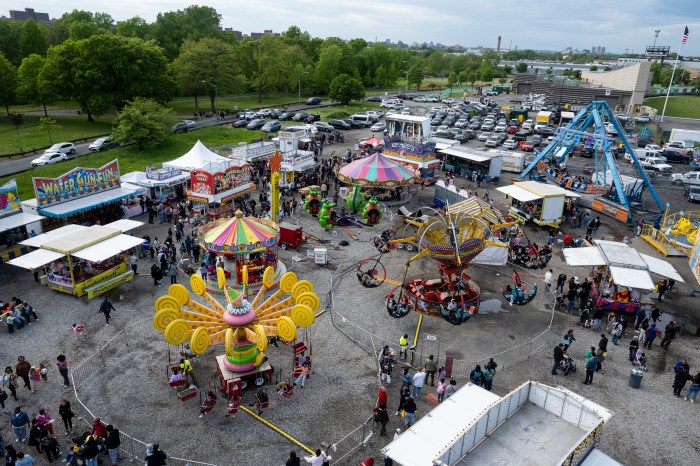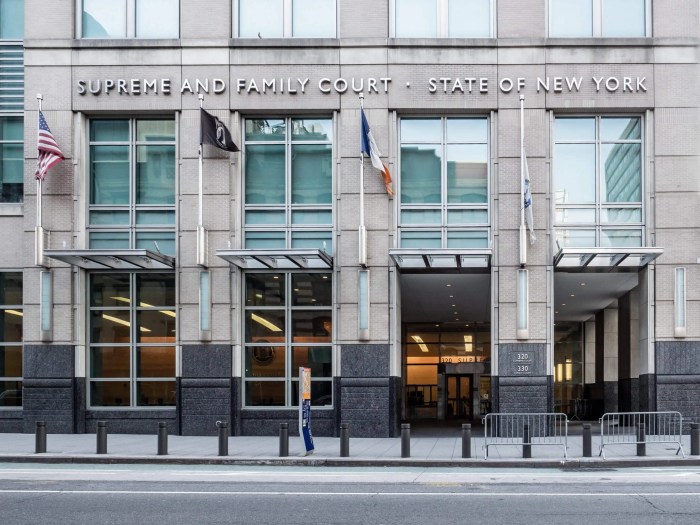By Albert Amateau
The three-district Department of Sanitation garage on Spring St. received final approval from the City Council on Wednesday by a vote of 40 to one with one abstention, but the Bloomberg administration made commitments to Council Speaker Christine Quinn to work over the next six months to make the project more acceptable neighborhood residents.
The project, budgeted at about $500 million, is intended to serve Sanitation Districts 1, 2 and 5. Village and Tribeca residents have protested that three districts are at least one too many and have pleaded with D.S.N.Y. to find somewhere else for District 5 which serves Midtown from 14th to 59th Sts.
The administration’s last minute commitments include a promise to discuss with local Councilmembers and community boards alternative sites for District 5. “These discussions will conclude within six months of the City Council’s approval of the proposed garage when we expect that design and final bid documents will be finalized,” the commitment letter says.
The city has previously resisted efforts to discuss alternatives and opponents have vowed to sue if the project is approved.
The letter also changes the design of the salt-pile shed proposed for the area just west of the Holland Tunnel vent tower between Spring and Canal Sts. The current design if for a partly open shed but the promised new design will be completely covered, enclosed on all sides with a loading door facing the tunnel ventilation building. There will be no ventilation openings on the sides of the shed and deliveries of salt and loading of salt spreaders will occur off the street between the shed and the ventilation tower.
The new commitments address another sore point with residents. The project will reduced the 74 private parking spaces for D.S.N.Y. employees to 34 spaces.
The administration also promises to eliminate fueling for agencies other than D.S.N.Y. except in an emergency. The commitment letter estimates the change would result in 38 fewer trips to and from the garage per day. The letter also said that queuing of Sanitation vehicles at the garage would not extend beyond the length of the new building along West St. or beyond the north side of Spring St.
The city also made green space commitments regarding the project; a total of 17 new trees around the garage site and about nine new trees around the salt shed. The proposed green roof of the garage will cover about 62,500 sq. ft., about 75 percent of the new garage.
Five days before the project was scheduled to go before the City Council for final approval, opponents made a last-ditch stand against a 120-foot garage they said would have a devastating impact on Hudson Square, a neighborhood that has become increasingly residential over the past several years. The city plans to share the garage site with U.P.S., which now owns the lot.
Several residents at the Nov. 14 Council subcommittee hearing raised the specter of Block 675, between W. 29th and 30th Sts. and 11th and 12th Aves., which the city had approved for Department of Sanitation use with a park on its roof in 2005, but was dropped two years later.
“It hasn’t escaped many of us here that Joe Rose, one of the board of directors of the Hudson River Park Trust, just filed a permit to build a luxury hotel on that same exact plot,” said Kim Tabet, a Hudson Square resident, of Block 675.
David Reck, representing Community Board 2, which includes the West Village and Hudson Square, said, “This issue has been around for 10 years.” Reck, who lives on Greenwich St. two blocks from the proposed garage, said, “It was supposed to be settled by using Block 675, but the city reneged on the deal,” and added, “We are trying to work out a compromise but all D.S.N.Y. says is no.”
Carole DeSaram, a Community Board 1 member and a leader in the Tribeca Community Association, said the project was “a half-billion-dollar Taj Mahal on the Hudson.” She said the Sanitation Department has grossly under estimated the traffic impact on Tribeca and Hudson Square.
Maria Passannante-Derr, a member and former chairperson of C.B. 2, said the department failed to make an adequate study of an already congested traffic situation. Derr said there would be 800 truck trips per day instead of the 480 that Sanitation estimates.
D.S.N.Y. insisted its Spring St. project was necessary because the 1998 Hudson River Park Act required the department to remove its garbage trucks and salt pile from Gansevoort Peninsula so the peninsula can be redeveloped into part of the Hudson River Park. The deadline under the act was 2003, but Sanitation remained because there were no alternative sites. In 2005, Friends of Hudson River Park, a civic group, filed a lawsuit to force Sanitation off the peninsula, and the action was settled with a court order giving the department until December 2013 to vacate Gansevoort.
Hudson River Park advocates, many of them Chelsea residents, turned out at the hearing to support the Sanitation garage at Spring St.
A.J. Pietrantone, Friends of Hudson River Park executive director, insisted that the group would not object if there were definite plans for an alternative site. But he warned, “We cannot defer action on converting Gansevoort to parkland on the hope that something might develop at some unidentified point in the future.”
Councilmember Alan Gerson, whose district borders the garage site, was the only member to abstain. A few weeks ago, when the term limit extension bill was under debate, Gerson said he did not like the idea of abstentions and that he had never done so before. He said then he was considering doing that on term limit extensions, but he voted in favor. He did not return a call for comment by press time Wednesday.
Albert@DowntownExpress.com















